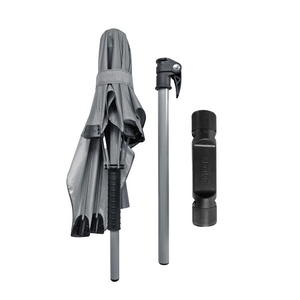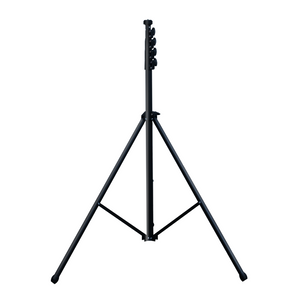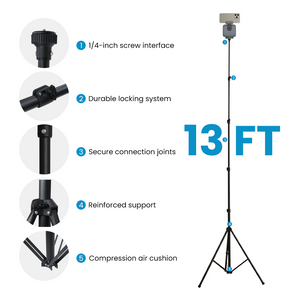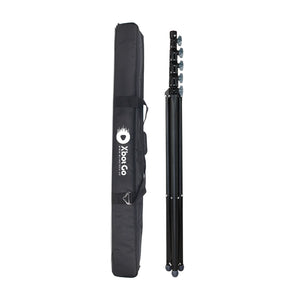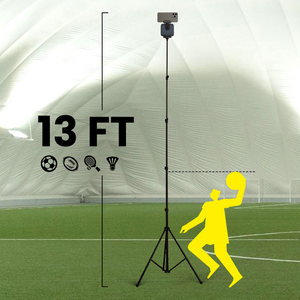XbotGo Chameleon AI Sports Camera
What is a Flex in Fantasy Football: The Complete Guide 2025
Week 16, championship game, and your season comes down to one decision. Do you flex that hot-hand running back against a tough defense, or roll with the consistent wide receiver who's been Mr. Reliable all year?
That single flex decision could be worth thousands of dollars, year-long bragging rights, or that coveted championship trophy.
If you've ever wondered what makes the flex position so crucial in fantasy football, or why experienced managers obsess over optimizing this single roster spot, you're about to discover why mastering the flex can transform you from a casual player into a championship contender.
Understanding Flex Basics
What is the Flex Position?
The flex position in fantasy football is your lineup's Swiss Army knife – a versatile roster spot that lets you start an additional running back (RB), wide receiver (WR), or tight end (TE) beyond your required starters. Think of it as your strategic wildcard, giving you the flexibility to maximize points based on matchups, player form, and weekly opportunities.
Unlike rigid position requirements (2 RBs, 2 WRs, 1 TE), the flex spot adapts to your team's strengths. Got three stud running backs? The flex lets you start all three. Loaded at wide receiver? Perfect – flex that third wideout and watch the points roll in.
Standard vs SuperFlex Formats
Here's where things get interesting. While standard flex leagues keep things simple with RB/WR/TE eligibility, SuperFlex leagues add quarterbacks to the mix – and that changes everything.
Standard Flex:
- Eligible positions: RB, WR, TE
- Most common format in home leagues
- Strategy focuses on skill position depth
SuperFlex:
- Eligible positions: RB, WR, TE, QB
- Dramatically increases quarterback value
- Creates more complex draft strategies
In SuperFlex, that second quarterback slot becomes incredibly valuable. While Joe Burrow might be a sixth-round pick in standard leagues, he could go in the second or third round of SuperFlex drafts.
Common League Variations
Not all flex positions are created equal. Here's what you might encounter:
- Standard Flex (W/R/T) – The most common, allowing any skill position player
- RB/WR Flex – No tight ends allowed, emphasizing traditional flex players
- Double Flex – Two flex spots, requiring deeper roster construction
- SuperFlex – Includes QB eligibility, changing entire league dynamics
Understanding your league's specific flex rules before draft day is crucial. It affects everything from draft strategy to waiver wire priorities.
Strategic Flex Management
The "Latest Game" Strategy
Here's the golden rule that separates rookies from veterans: always put your latest-starting player in the flex spot.
Why? It's simple game theory. If your Monday Night Football player is slotted at WR2 and gets injured during warmups, you can only replace them with another wide receiver. But if they're in your flex? You can pivot to any eligible position – giving you maximum roster flexibility when you need it most.
Thursday Night Rule Explained
Never, ever, EVER put a Thursday night player in your flex spot.
This isn't just veteran advice – it's fantasy football gospel. Thursday games lock your flexibility for the entire weekend. If one of your Sunday starters gets ruled out, you've already limited your replacement options by having that flex spot locked since Thursday.
Real-world example: You flex Stefon Diggs on Thursday night. Sunday morning, news breaks that your RB2 is inactive. Now you're forced to start your backup running back instead of having the option to flex a higher-scoring wide receiver from your bench.
Injury and Bye Week Planning
Smart flex management means thinking two steps ahead:
- Check practice reports – Wednesday and Thursday injury reports signal Sunday availability
- Have contingency plans – Know your pivot options before Sunday morning
- Prioritize Sunday night/Monday players – These give you maximum decision time
- Stack bye weeks strategically – Better to take one terrible week than multiple mediocre ones
The flex position becomes your safety valve during bye week crunches. When your RB1 is on bye, that flex spot might be the difference between competing and getting blown out.
Draft Strategy for Flex Success
Building Flex Depth
Your draft approach should prioritize flex depth after securing core starters. Here's the blueprint:
Rounds 1-3: Lock in elite talent at RB/WR
Rounds 4-6: Target your flex foundation
Rounds 7-10: Build depth with upside plays
Rounds 11+: High-ceiling lottery tickets
The magic happens in those middle rounds. While others reach for quarterbacks or tight ends, you're stockpiling the Rashod Batemans and Tyler Allgeiers of the world – players who could easily outperform their draft position.
PPR vs Standard Considerations
Scoring format dramatically impacts flex strategy:
PPR (Point Per Reception):
- Pass-catching backs gain massive value
- Slot receivers become flex gold
- Target share matters more than yards
Standard Scoring:
- Touchdown upside takes priority
- Goal-line backs gain value
- Big-play ability matters most
In PPR, that third-down back catching 5-6 passes might outscore the "starter" who only touches the ball on early downs. Players like Austin Ekeler or Nyheim Hines become flex champions in PPR formats.
SuperFlex Draft Approach
SuperFlex changes everything. Your draft strategy needs to account for quarterback scarcity:
- Elite QBs go early – Josh Allen and Patrick Mahomes often gone by pick 10
- Two QB minimum – Never leave your draft without two starting quarterbacks
- Three is safer – Bye weeks and injuries make that third QB valuable
- Adjust position values – RBs and WRs slide down draft boards
Remember: in SuperFlex, even mediocre quarterbacks outscore good skill position players. Baker Mayfield's 15-point floor beats most flex options' ceiling.
Weekly Flex Optimization
Matchup Analysis Framework
Stop looking at projected points alone. Here's what actually matters:
For Running Backs:
- Opponent's run defense ranking
- Expected game script (leading = more runs)
- Red zone opportunities
- Snap count trends
For Wide Receivers:
- Cornerback matchups
- Target share last 3 games
- Red zone targets
- Slot vs outside alignment
For Tight Ends:
- Coverage scheme susceptibility
- Red zone target percentage
- Opponent's TE points allowed
Ceiling vs Floor Decisions
Every Sunday morning comes down to this question: Do I need safe points or home run potential?
When to play it safe (floor):
- You're projected to win comfortably
- Opponent has players on bye/injured
- Early season matchups
When to swing for upside (ceiling):
- You're a heavy underdog
- Playoff elimination games
- Opponent has elite players going off
The flex position is where you make this strategic choice most often.
Advanced Flex Strategies
"Winning the Flex" Philosophy
Since 2013, sharp fantasy players have understood a fundamental truth: championships are won at the flex position.
Think about it – everyone has stud RBs and WRs in their required slots. But that flex spot? That's where depth and smart decisions separate winners from also-rans. It's the difference between starting a boom-or-bust WR3 or that overlooked running back who gets 15 touches against a soft defense.
Trading and Roster Construction
Your flex strategy should drive your trade approach:
Sell High Candidates:
- Players with unsustainable touchdown rates
- Backups getting temporary starts
- Veterans showing age regression
Buy Low Targets:
- Talented players in slumps
- Post-injury bounceback candidates
- Players with improving schedules
Pro tip: Package your flex players to upgrade starters, then find new flex values on waivers.
Championship-Level Tactics
Elite managers use these advanced flex strategies:
- Correlation plays – Flex players from your QB's team for stacked upside
- Leverage spots – Flex players your opponent needs to block them
- Schedule stacking – Target players with playoff-friendly schedules
- Handcuff flexibility – Own backups who could become flex-worthy
The best flex plays often come from thinking differently than your league.
Your Flex Mastery Action Plan
The flex position isn't just another roster spot – it's your strategic advantage. Here's how to dominate:
- Always keep your flex spot open until the latest possible game
- Build depth through your draft, not just starters
- Study matchups religiously – they matter more at flex than anywhere
- Adapt your strategy to scoring settings and league format
- Trust the process – make decisions based on opportunity, not outcomes
Fantasy football is won in the margins, and no margin matters more than flex optimization. Whether you're chasing your first championship or building a dynasty, mastering flex strategy separates good teams from great ones.
Your championship run starts with that one perfect flex decision.
XbotGo Chameleon AI Sports Camera
Capture every moment with AI-powered tracking. Perfect for coaches, parents, and athletes who want seamless footage without manual filming.







 Soccer
Soccer Basketball
Basketball Ice Hockey
Ice Hockey Rugby
Rugby











